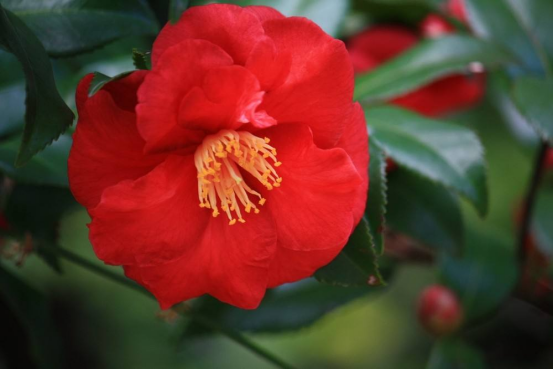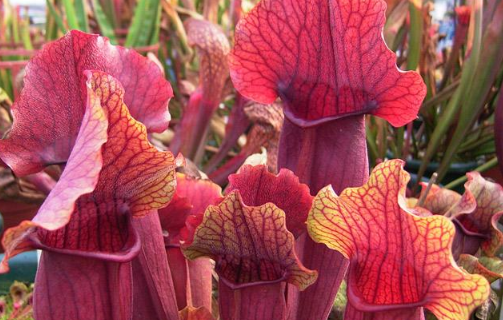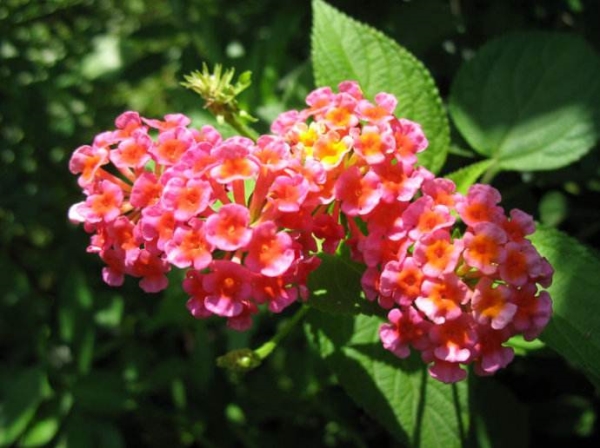Key points of bonsai conservation:
1. Light
If you want to enjoy the beauty of tea plum bonsai all the year round, it is very important to maintain it at ordinary times. Tea plum is a kind of plant that needs to survive in a semi-shady environment, and it needs ventilation. Usually if the lack of light, no ventilation, then the leaves will not have luster, flower color will not be bright enough, and even may not bloom much. If the light is too strong, the leaves will be burned and fall off. Be careful not to move the position frequently, which affects the normal growth of tea plum.
2. Watering
Tea plum bonsai in summer time to frequent watering, every morning or evening to water once, each time to water thoroughly and leave no water. In addition to watering, but also regularly spray water to the leaves, generally every 3-4 days or so spray once, so in addition to increasing air humidity, but also can wash away dust. In winter, you don't need to pour too much water, usually once a week.

3. Fertilization
Tea plum bonsai needs nutrients during flowering, but it is not advisable to fertilize before flowering, so that the buds do not open. Generally, we choose to apply fertilizer after flowering in spring. When the spring shoots age in June, we can apply a little more fertilizer, which can be applied once every 10 days. Don't fertilize until late September.
4. Timely Shulei
In the flowering period of tea plum, we should also pay attention to thinning buds. The bud incubation period of tea plum is very long. If the bud is not thinned, it will consume a lot of nutrients, make the flower development unsuccessful, and also affect the whole plant.
After reading this article is not very interested in tea plum? In fact, the cultivation of tea plum bonsai is very simple, as long as you master the above points, I believe you can also raise a pot of excellent tea plum bonsai!
Key Points for Conservation of Palm Bamboo Bonsai| Palm bamboo bonsai management points Palm bamboo bonsai maintenance points Palm bamboo bonsai management points are introduced as follows: 1. Conservation and management place: Palm bamboo is a southern plant, which should be placed in warm, humid, ventilated and shady places. Shed in summer, put into greenhouse in winter.
Watering: usually to keep the basin soil moist, but also not water. In summer, water early and late, and spray foliar water. Winter should be reduced.
Fertilization: During the spring and summer growth period, it is appropriate to apply thin fertilizer frequently, with decomposed cake fertilizer water better, fertilizer can add a small amount of ferrous sulfate, so that its leaves green.
Pruning: Palm bamboo pruning is very simple, mainly cut off its withered yellow leaves and sick leaves, such as layers are too dense, can also be thinned.
Turn over pot: turn over pot once every 2 years. For new plants, plant by division or re-layout. The time of pot turning should be from March to April in spring. To replace the old soil above 1B2, cultivate loose humus soil.
Palm bamboo diseases and insect pests less, mainly scale insects, can be artificially washed to kill it. Frequent application of a small amount of ferrous sulfate solution can prevent leaf yellowing.
2. ornamental
Palm bamboo posture elegant, green pole pavilion, leaf cover such as umbrella, evergreen, ornamental value is very high. If made into a jungle style, and then with rocks, more poetic. Elm bonsai maintenance points, elm bonsai how to make and maintain
❤`·.¸¸.·Related Recommendations:
Bamboo
Yuanbao tree
Rockery bonsai
Pine bonsai
❤`·.¸¸.·Decorate your home and enjoy every minute of your life! This article comes from [decoration information]
Elm tree posture chic tall and straight, bark rough and there are many longitudinal cracks appear dark gray, but its twigs soft suitable for and cross climbing, ancient elm pile is more bearing, although it seems to have been decayed by years, but branches and leaves still grow normally, giving people the meaning of ancient trees in spring. Some of the elm bonsai made are intertwined, and even some are decaying into magic, do not have a lasting appeal.
Elm bonsai production: 1, ready with plain sand pot, used to plant the newly dug elm old pile, also known as "raising pile". Raising piles is generally carried out from late autumn to spring, and the survival rate is the highest about three months before elm germination. 2, big stumps transplanted with guest soil, and to be carried out before the winter and spring sprout. After planting, use straw mixed with yellow muddy water to wind the stem, and often water to ensure that the soil and straw are moist. 3. Before planting, the roots and branches should be pruned, and viscous sap often flows out from the cut. At this time, it is necessary to pay attention to: the viscous tree liquid cannot seep too much, otherwise it will seriously affect the survival rate. In order to prevent this from happening, we can use wax to seal the incision and then sprinkle fine sand, which can be effectively avoided.
4, after planting to compact the soil, there is no need to water at this time, and then spray 1-2 times a day to the branches, and then 3-4 days later to water again, finally as long as it is not dry, do not water, do not let the soil water. 5. According to the basic shape of the old pile, shape the elm bonsai, and make different forms of bonsai through coiling and pruning. There is no special attention period for modeling time. It can be in the dormant period after defoliation or in the growing period, but it must not be done in the germination period.
Conservation of elm bonsai:
1. Light: Strengthen the light of elm bonsai. Elm bonsai like sunlight, poor shade tolerance, the production of bonsai to be placed in sunny places. Sunlight is insufficient, it will only grow branches and leaf color is very ugly, but also easy to cause pests. Watering: Although elm trees like to grow in wet places, they are also afraid of water stains. Therefore, every time watering should be thoroughly watered, in the middle of summer, watering once in the morning and evening, be sure to keep the pot soil moist and not ponding.
3, fertilization: elm bonsai do not need too much fertilization, as long as each application in early spring and early autumn is enough. 4, pruning: because elm growth is very strong, so we need to be diligent pruning, to maintain the ornamental value of elm bonsai. Pruning can be carried out in autumn, cutting off unused branches and diseased branches, and then pruning. 5, pests and diseases: elm bonsai is often damaged by aphids, clam shells, etc., we can use omethoate plus 1000 times water diluted spray kill.
Conclusion: elm pile is not only used for potted landscape viewing, but also for garden decoration trees, single tree into a scene, excellent effect. In Jiangnan area, it can become "every village must have elms". The above is the introduction of Xiaobian. After reading it, will you make elm bonsai? What do you know about its maintenance? Friends who love bonsai, plant one quickly!
▣沙漠玫瑰养殖 ▣蓝色妖姬的花语 ▣栀子花叶子发黄 ▣玫瑰花种植技术▣碰碰香怎么养 ▣水仙花的花语 ▣玫瑰花种植技术 ▣长寿花养殖方法 ▣扶桑的养殖方法
- Prev

Common diseases of bottle grass and their solutions
The cause of root rot disease is that the root system of bottle grass is relatively developed, which is usually matched with water moss. If the permeability of the basin is poor, shallow or watered too frequently, it is easy to cause stagnant water in the basin and cause root rot disease. The solution: the flowerpot should be a deep pot, at least 10 centimeters or more, and there should be a hole in the bottom of the pot. It is not necessary to cover the pot with water moss.
- Next

Maintenance methods of five-colored plum
Five-colored plum is a kind of light-loving plant, so the place to choose to plant should be sunny, preferably outdoors, or on the balcony, usually to keep the soil moist, not too dry, but also to spray water to increase the temperature of the leaves, at the same time, do not accidentally eat five-color plum blossom leaves, these are poisonous
Related
- Fuxing push coffee new agricultural production and marketing class: lack of small-scale processing plants
- Jujube rice field leisure farm deep ploughing Yilan for five years to create a space for organic food and play
- Nongyu Farm-A trial of organic papaya for brave women with advanced technology
- Four points for attention in the prevention and control of diseases and insect pests of edible fungi
- How to add nutrient solution to Edible Fungi
- Is there any good way to control edible fungus mites?
- Open Inoculation Technology of Edible Fungi
- Is there any clever way to use fertilizer for edible fungus in winter?
- What agents are used to kill the pathogens of edible fungi in the mushroom shed?
- Rapid drying of Edible Fungi

